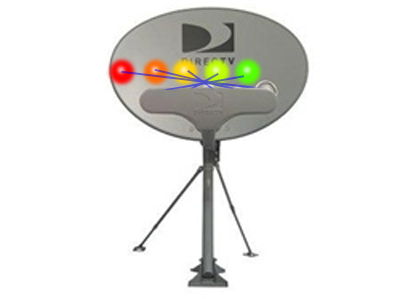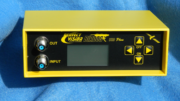What you see above you is a typical home satellite antenna. If you’re in the US, you’re going to get one of these oval-shaped ones no matter what service you subscribe to. But what if someone just happens to roll up with four or five round dishes and gives them to you for free? Can you use them? The answer depends on which satellite service you have. This article will specifically deal with US satellite TV, but if you have satellite in Canada, just think the word “Shaw” whenever you see the word DISH (the company, not the part. I know it’s confusing.)
Why dishes are oval
It may not make sense why satellite dishes are oval. After all, you would think they would be round. In other parts of the world, they are. The oval dish is really pretty specific to North America, and the reason can be found in the fact that we have just so many more channels than other countries. We have local channels all over the country, plus a lot of national channels that aren’t available anywhere else.
In fact, we have so many channels that we need more than one satellite just to carry them. Not only that, we need more than one satellite location to carry them. And that’s the point. At one point DIRECTV had seven satellite locations and DISH had six. Today DIRECTV has only 3 and DISH only 4. But the point is, if you have more than one, you need an oval dish.

This is an older image but it does get the point across. At the time I drew this, DIRECTV had five primary satellite locations spread out in a line across the sky. With an oval-shaped dish, you can aim at the center one and the other ones will hit the edges of the dish. If you had a round dish, it wouldn’t receive signals from any other location but the one it was aimed at.
But let’s get back to the question.
If you wanted to, could you get multiple dishes and aim each one at a specific location, combining them in such a way that any receiver could see any satellite? The easiest answer is “yes but.”
If you have DISH (or Shaw) then this is a fairly simple exercise. You would just get two round dishes and point each one at a different location. You’d get two, not four, because DISH’s fleet is separated with two satellites on one side of the country and two on the other. You can’t really combine the two locations. Then you would feed it all into a DPH42 multiswitch and you’d be set.
It should be fairly easy to do the same thing for DIRECTV, but it’s not. Why? Those round dishes work with frequencies from 12-18 Ghz. Two of DIRECTV’s satellite locations broadcast from 28-40GHz. You can’t but a round dish that will receive those frequencies. Or, I should say, you can’t buy one for any reasonable amount of money. I’m sure it’s possible if you’re into spending thousands of dollars.
DIRECTV does this on purpose. Using that higher frequency range, they have the ability to have thousands of channels available using only one satellite location. This makes it easier for people all over the country to get the channels they want. DISH doesn’t do this, which is why they are restricted to two fleets of satellites. That’s what it takes for them to put all the channels out that customers want.
A better way?
Folks, I’m all for thought experiments like this one. But really, if you have DIRECTV or DISH you are really much better off with the equipment they give you. It’s specifically designed to work right. The good thing is that you can get the very same equipment that installers use. Shop at Solid Signal for the right equipment at the right price. If you have questions, we’re here to help! Call us at 888-233-7563 or fill out the form below. We’ll get right back to you!





